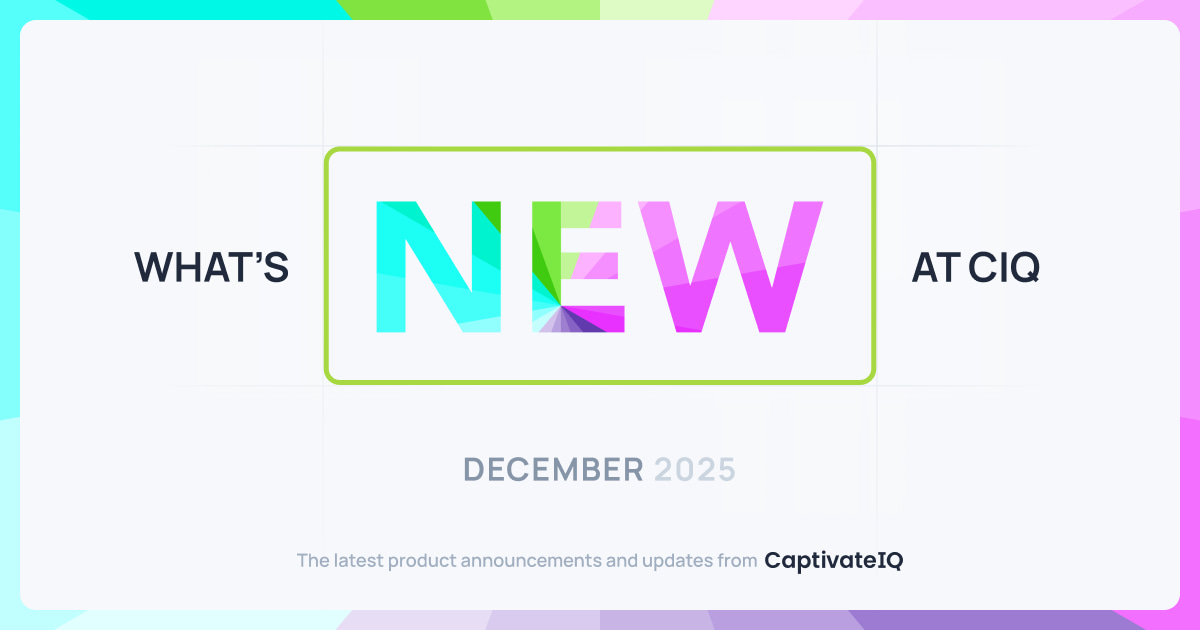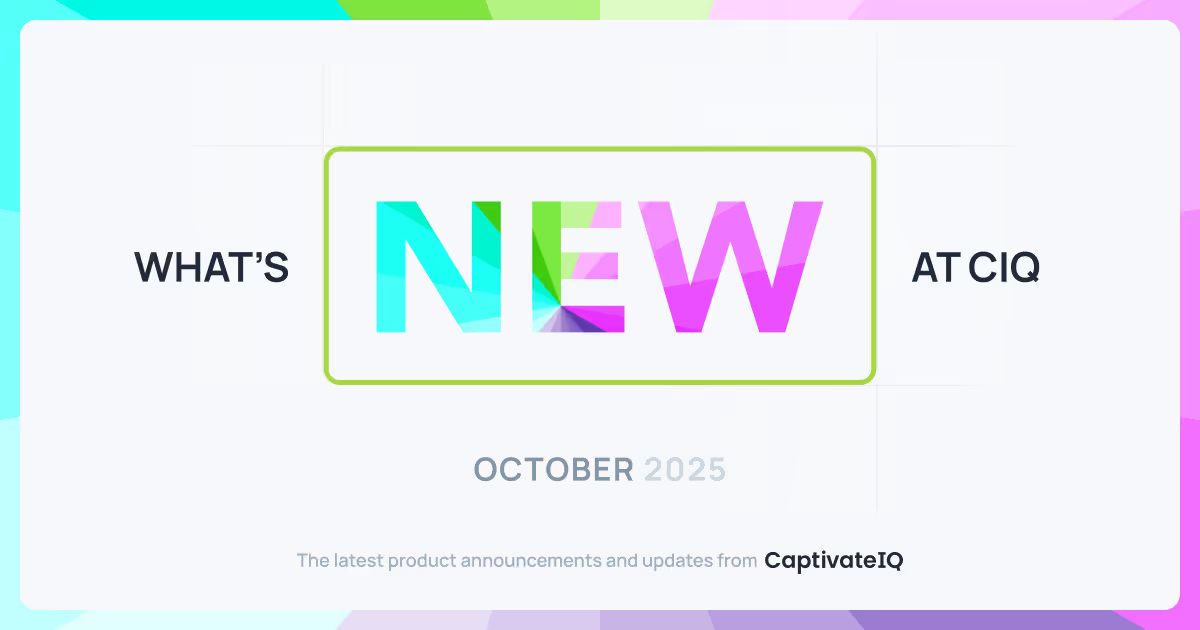Giving Quality and Reliability the Focus it Requires: Key Pillars of a Great Engineering Team
This is a guest blog post by Nahi Ojeil, Vice President of Engineering at CaptivateIQ. Before CaptivateIQ, Nahi held engineering leadership positions at Dropbox and Commure. In this blog post, Nahi explains how he’s building an engineering team that values reliability, infrastructure, and quality at CaptivateIQ. He also uncovers some things to consider when establishing a strong engineering culture.
We recently created the Reliability, Infrastructure, and Quality (RIQ) organizational pillar at CaptivateIQ as part of an ongoing focus and investment in scaling our platform and ensuring enterprise-grade quality, security, and reliability. As a core part of our engineering identity, we spent time articulating the importance of this pillar to our team. I’ve written this post to share some of our thinking behind our RIQ pillar.
When an organization reaches a certain level of growth, its leaders may realize how important quality and reliability are to their product and business. For some, this is part of the intrinsic product value from early on. For others, the realization that they need to invest in quality and reliability comes much later, after they've been through a great deal of hardship that really puts the magnitude of the risk, and opportunity, into perspective. Regardless, it will always be a question of when instead of if.
For CaptivateIQ, reliability, security, and quality have always been part of our DNA. However, this year we decided that it was time that we did even more (as summarized below).
Before RIQ
- Lack of center of excellence
- Lack of representation within leadership
- Lack of clarity around operational role
- Dedicated infrastructure and quality teams nested inside different vertical product teams with limited support
After RIQ
- Single organization with domain experts
- Senior leadership reporting into VP of Engineering
- Operating as equal to product with the ability to influence
- Infrastructure and quality teams working together as part of a single organization with a clear mission
Setting up a “horizontal pillar” in engineering
There are many ways to structure the engineering organization to support this objective, however, we chose to create a top-level organization (we call them pillars) alongside our existing three vertical product pillars. Though pillars aren’t usually horizontal (we’re engineers, not architects!), we wanted to recognize that RIQ crosses product boundaries. However, we still wanted to give it the same level of visibility, priority, and influence as our existing product pillars.

Here’s why:
- Attracting and developing expertise. You can never go wrong with hiring talented people that you can throw any problem at and trust that they will figure it out. With that comes a learning curve and a realization that deep expertise in these problems goes a long way to accelerating our progress. Having highly-skilled experts can also help develop talented hires who might be interested in growing their skillset faster. Having a team focused on tackling quality and reliability problems creates a space for everyone to develop and learn more quickly. It shows a commitment to the skills and expertise needed.
- Creating leverage across the organization. As the engineering team grows, the leverage we get by investing in a horizontal pillar starts paying dividends beyond the headcount investment necessary to set up the pillar. With every additional engineer in this pillar, there is an opportunity to deliver value that makes dozens of engineers more productive.
- Guaranteeing focus. I wouldn’t go as far as to say that any team has a single focus at a time. However, I believe at some point, a part of the organization needs to focus on the quality and reliability problems. Otherwise, you risk other teams being distracted by the very many needs of the business. In some ways, this creates healthy friction that keeps the important considerations top of mind and ensures the right overall trade-offs are considered.
Things to watch out for
Deciding on a structure is not enough to ensure success. At the end of the day, we are accepting a set of trade-offs with this structure that requires us to pay attention to a few failure modes.
- Good intentions turn into too much friction. Focusing on quality and reliability can quickly become complete risk aversion and a tendency not to change or evolve if the incentives are set up incorrectly. For us, the mission of the pillar encodes the importance of accelerating velocity through quality and reliability, putting the emphasis on what we want to enable.
- “Throw it over the wall” mentality. Creating an organization focused on quality and reliability can lead other teams to push all the responsibility away from themselves and onto the newly-formed team. If the majority of the organization does not feel the need to care about quality, then no single team can make up for that. For us, shared responsibility is very important and ensures healthy team partnerships.
- Isolation and “us vs. them” mentality. A product-driven, engineering-only organization can focus too much inwards and lose touch with the teams (and end users) they are trying to enable. Add to that the different lens from which they look at the same problems product engineers are tackling, and a culture of “us vs. them” can quickly emerge. Creating opportunities to embed members of the RIQ pillar inside the rest of engineering and setting up joint goals ensures a united front. It creates empathy-building opportunities that go a long way in countering this problem.
A few things that help
There are a few things that could really help make this type of approach successful.
- Good observability and metrics. It is hard to argue with facts and numbers; ultimately, good observability and metrics help different teams accept a common world view. Even though metrics are lagging indicators and sometimes are not enough to create clarity on forward-looking decisions, over time, they play an important role in building trust and confidence. As each decision plays out, you create an opportunity to look back, learn, and improve as an organization.
- Transparency and communication. A culture that promotes communication and transparency can help minimize surprises — especially when a pillar like RIQ feels like they need to jump in late to the game to make unpopular decisions that block or slow things down. Engaging early also supports developing joint goals and shaping decisions before the cost of change is too high.
- Leadership support and buy-in. Any foundational pillar that heavily relies on influence cannot be successful without leadership support and buy-in.
I hope this post helps others going through a similar journey and sheds more light on the engineering culture we are building at CaptivateIQ. For those of you who feel excited about being part of this journey — we are hiring!
Feel free to connect with me on LinkedIn or reach out directly if you are interested in learning more.
.svg)


.png)

.avif)



